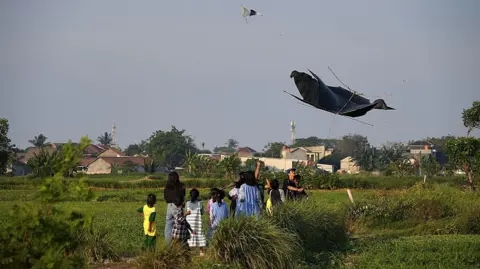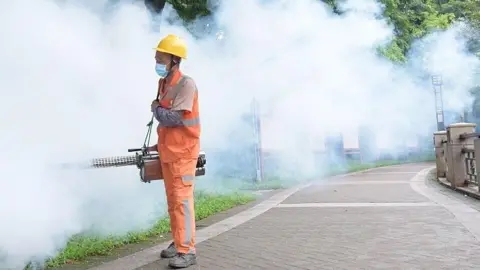Near Jakarta’s bustling international airport, an unlikely battle unfolds in the skies. Children gather in open fields, their colorful kites dancing in the wind—until the deafening roar of descending planes interrupts their play.
For generations, kite-flying has been a beloved pastime in Indonesia, especially during school breaks. But authorities warn that these harmless-looking toys pose serious risks to aviation. In early July alone, 21 flights at Soekarno-Hatta International Airport were disrupted by kites, forcing some planes to divert or abort landings.
Airport officials have stepped up patrols, confiscating kites and even offering alternative sports equipment to discourage the practice. Yet, for many children, the thrill of flying kites outweighs the risks—and the scoldings. “If my kite is taken, I’ll just make another one,” says seven-year-old Atif.
The dangers are real. In Bali, a helicopter crash linked to kite strings injured five people earlier this year. Kites have also been found tangled in plane engines, leading to safety investigations. Under Indonesian law, those caught flying kites near airports face hefty fines or even jail time.
But the issue isn’t just about aviation. In crowded cities, kite-chasing has led to tragic accidents, including a child fatally struck by a car. Meanwhile, rapid urbanization has left fewer open spaces for safe kite-flying. “There’s nowhere else to go,” admits 17-year-old Rasha, a local kite-maker and enthusiast.
Despite the crackdowns, the tradition persists. Kites hold deep cultural significance, used in harvest rituals, bird-scaring, and even religious offerings. “It’s part of our heritage,” explains a museum expert. “But we must teach children to fly responsibly.”
For now, the tug-of-war continues—between preserving tradition and ensuring safety in Indonesia’s ever-busier skies.









